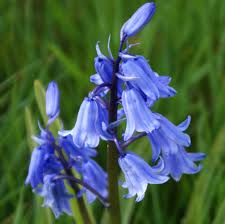





Woodlands are a rich repository of wildlife because native trees harbour large numbers of insects, which in turn attract insect-eating birds. Bees visit the flowers for pollen and nectar, and birds and squirrels nest in the branches. Non-native trees are not nearly as rich in wildlife, with fewer insects having adapted to using them as host plants, but they still have a valuable role to play in providing nectar, fruit and nesting sites.
If you are lucky enough to have an area of existing woodland in your garden, then you are already on your way to establishing a species-rich woodland garden. Start by checking the actual trees in the woodland, noting their species, type and condition. If any trees are growing too close together, they may need thinning in order to provide them with sufficient room for growth and enough light for health. Diseased and dead trees may need to be cut down. Consider leaving one or two dead or dying trees, because they will provide food for many insects and invertebrates, which are then food for birds like woodpeckers, and any holes in the tree trunks will provide nesting sites for bees, mice, squirrels and birds.
Add additional trees where there are gaps in the canopy, then consider whether there is room beneath for an under-layer of native shrubs and some ground-covering herbaceous plants. Planting three such layers within your woodland will provide an attractive setting that is true to nature, and one that, in its diversity, will be home to all manner of wildlife.
 Several bulbous plants, including Galanthus nivalis (snowdrops) and Hyacinthoides non-scripta (bluebells), are much easier to establish when planted ‘in the green’, ie. after flowering, than as dry bulbs. Such plants are not always easy to get hold off, but you may find friends who have clumps to spare and they are also obtainable from specialist nurseries. Do not be tempted to dig up these bulbs in the wild because it is against the law. Bluebells, in particular, will multiply rapidly, and a few clumps will soon spread to produce an impressive blue carpet in spring.
Several bulbous plants, including Galanthus nivalis (snowdrops) and Hyacinthoides non-scripta (bluebells), are much easier to establish when planted ‘in the green’, ie. after flowering, than as dry bulbs. Such plants are not always easy to get hold off, but you may find friends who have clumps to spare and they are also obtainable from specialist nurseries. Do not be tempted to dig up these bulbs in the wild because it is against the law. Bluebells, in particular, will multiply rapidly, and a few clumps will soon spread to produce an impressive blue carpet in spring.
It is possible to start a wood from scratch (see above). In the early years, grass will grow between the trees, but once a canopy has been established the ground beneath can be planted with bluebells and other woodland plants.
Local grants may be available, so check with your planning authority. Work out a plan for the woodland or tree belt: it is easier to use a grid system with trees and large shrubs planted at 3m (10ft) spacings. Space larger trees like oak, ash and beech 9m (30ft) apart and place faster-growing, smaller trees like hazel and hawthorn in between.
Copyright © www.100flowers.win Botanic Garden All Rights Reserved